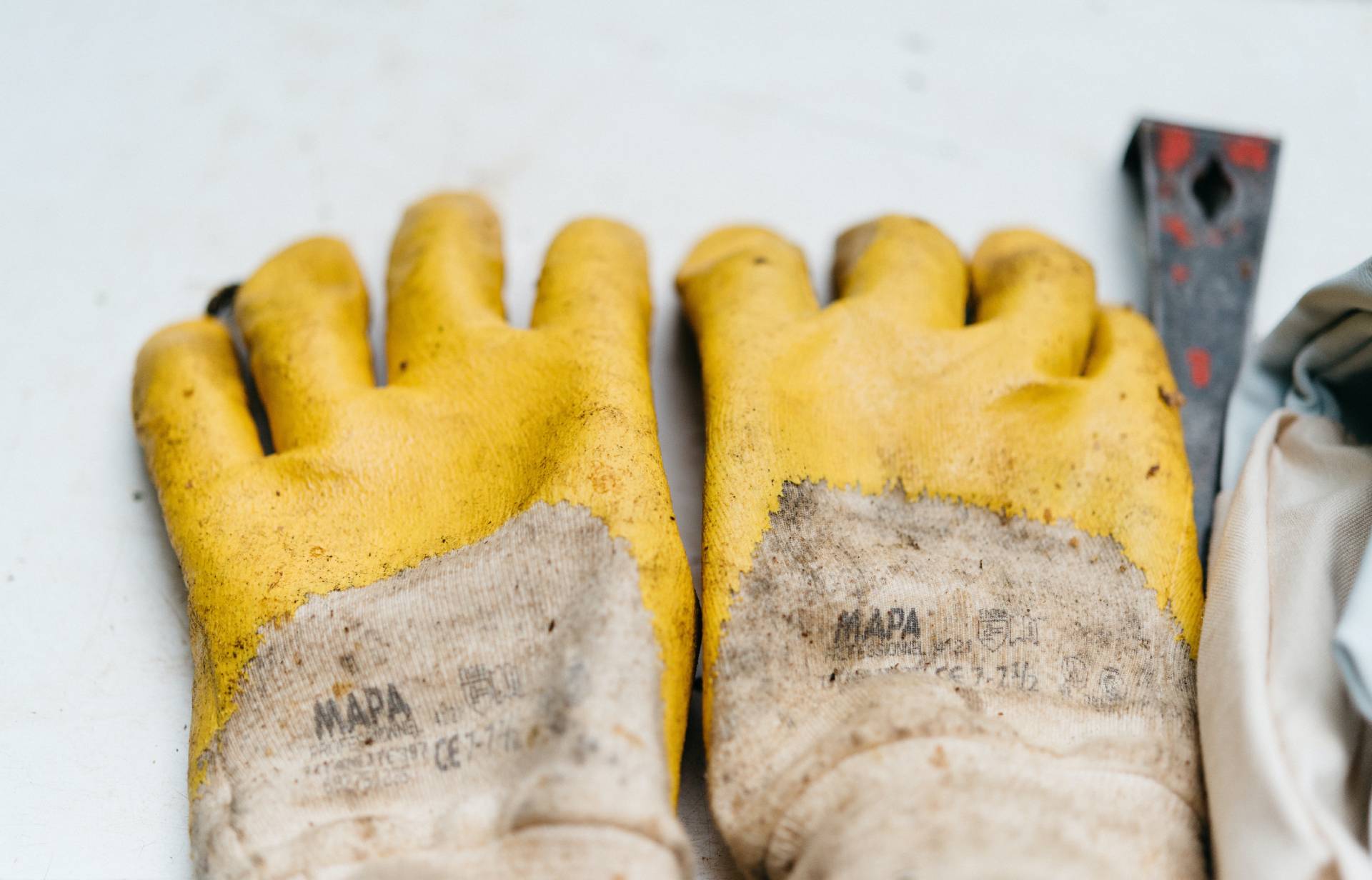
Where hazards and risks are present that cannot be eliminated or effectively controlled personal protective equipment may need to be used. This is where an item of equipment or clothing is issued to protect the wearer from a known risk. PPE and gloves should be issued as a last resort and not as a first option. Gloves should be worn as much as possible when handling materials and articles to protect the hands, not only from cuts, punctures, heat and chemical burns or electric shock; but also from irritants and contaminants. The kind of glove used will depend on the hazards involved. It is important to remember that gloves should not be used on moving machinery, e.g. drilling machines as they could cause the operator to become entangled.
A large proportion of the industrial gloves used in the UK are traditional types made either of leather or cotton but there are many other kinds available as well. The most common type in use is the PVC fabric-supported glove, even this one gloves can be used to protect again a range of different hazards including hazardous chemicals; for hot work a palm-coated type is manufactured; and there is a ribbed design for handling greasy objects. Synthetic fabric such as nylon is used for specific light work and synthetic rubber such as neoprene and nitrile, which have the basic properties of rubber, display good resistance to fats, oils, greases, etc. and also (in the case of nitrile) resistance to solvents.
Glove Protection
EN388 Protection Against Mechanical Risks
[table “10” not found /]EN420 Standards For Protection Gloves
This standard defines the general requirements for all forms of gloves.
- Gloves should not increase the risk to the user
- The PH of the glove should be as near to neutral as possible
- There must be a limited amount of any contents in the material which may cause allergic reactions
- Sizes as agreed in EU hand sizes
The three categories are based on the different risks which the gloves should protect against.
Category 1
Gloves intended to protect the wearer from minimal injuries. Simple design and low risk. Includes household gloves, gardening gloves and light duty cotton gloves.
Category 2
This is the mid-range for risks which are not minor but equally not high risk. Gloves are tested to EN388 to show they give a certain amount of protection.
Category 3
These gloves protect again very high risks which could maim or even cause death. These must be marked with clear pictograms showing their protective qualities. This could include chemical, heat and electrical protection.
Learn more about this and more on workplace safety in our Health and Safety at Work course at Cambridge Safety.
Back to blogs



